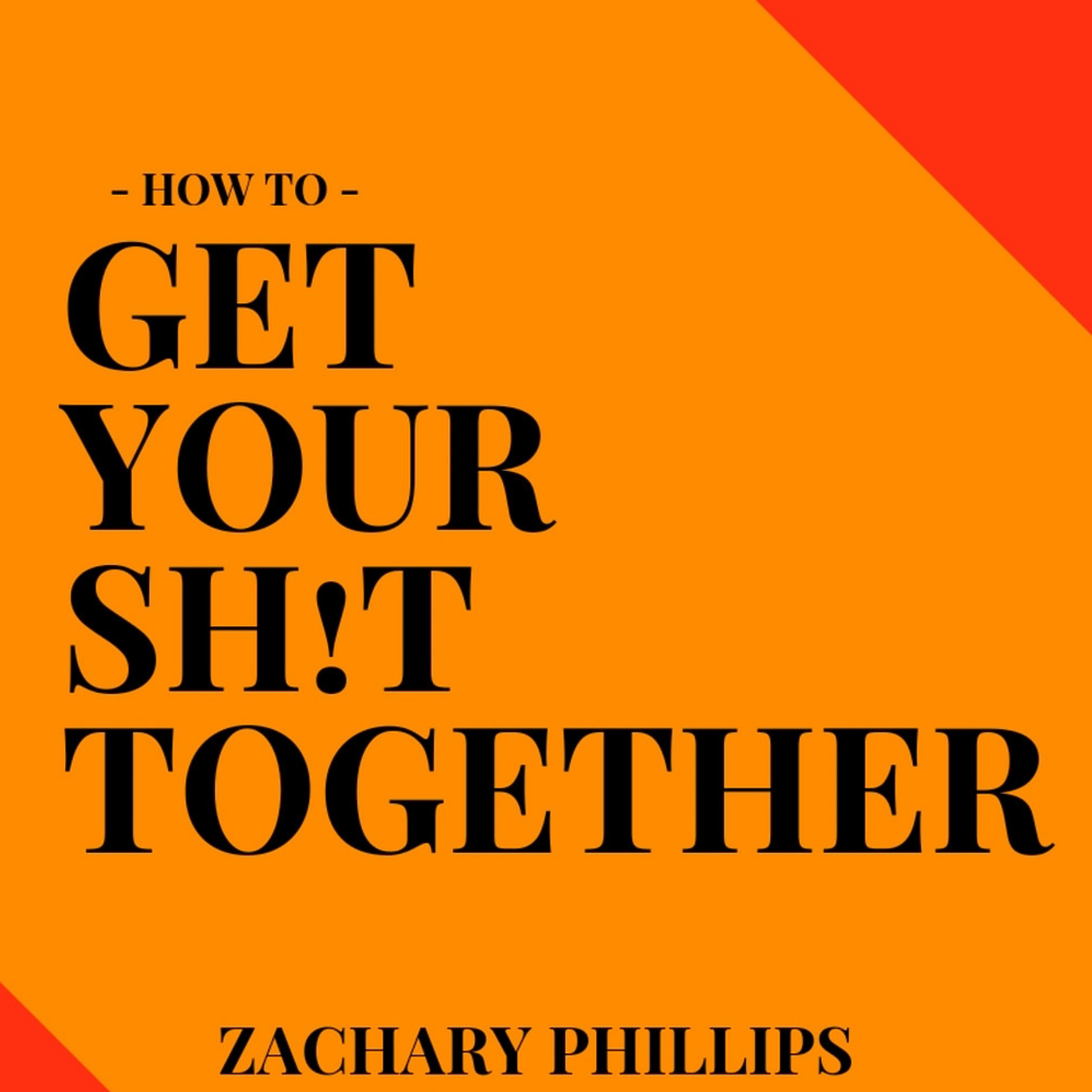Eliminate As Many Decisions As Possible & Free Your Creativity
/
Eliminate As Many Decisions As Possible
- Ch: 4.6 of How To Get Your Sh!t Together -
“You have heard the saying ‘Analysis creates paralysis.’ You can’t be 100% sure of anything.” – Mark Burnett
Decision making comes at a cost, particularly to those of us who have issues with anxiety or related mental afflictions.
If you break down what a decision is as a concept, you discover that it is the contemplation of multiple different futures simultaneously. You are then choosing which future you would like to live in, along with the acceptance of all of the consequences of that future. This is true for all decisions, both the small: what clothes to wear, what to eat, what movie to see; as well as the large: where to live, what career to pursue, what relationships to create.
Every time that you need to make a decision, you are using mental energy, energy that may be better spent elsewhere.
If you have to make too many decisions too quickly, you may become overwhelmed with choice, and subsequently paralysed by indecision. I know this is true for myself and many other people with anxiety related issues. We are fine with decision making, but if you ask us to make too many decisions, or if we are already in a compromised mental state, we may become overwhelmed and subsequently suffer a breakdown.
In order to accommodate for decision based anxiety, I make every effort to eliminate as many decisions as possible. Not only does this reduce my overall anxiety level, but it also gives me more time each day because the less decisions that I have to make, the more time I have available.
I want to eliminate as trivial many decisions from my life as possible, leaving much more mental space and time for what I really care about.
“If you spend too much time thinking about a thing, you will never get it done.” – Bruce Lee
For example, when I realised that every morning I was spending a lot of time and mental energy choosing what clothes to wear, I decided to simplify my wardrobe. I got rid of most of the clothes that I owned, and replaced them with multiple identical items that suit me. This meant purchasing multiple copies of the same shirts, jumpers, pants, socks and underwear. Now, no matter what the occasion, I have an outfit that I know works well together, regardless of the individual items that I happen to pull out of the cupboard. All I need to choose is the appropriate jacket and shoes required for the occasion.
I applied the same logic to choosing my gym clothes. I have seven pairs of identical shorts and singlets that I wear each day in the gym. That way I can wake up, chuck my clothes on and get into the exercise session without having to make any decisions (great for low motivation mornings).
I don’t really care what a stranger thinks of what I am wearing, but if I did, they would be left with a good impression. In reality a stranger will only see me once, so if I have the same clothes I am guaranteeing that they are seeing me at my best. True, I will always look the same around friends and family, but they accept me and my eccentricities for the most part.
Funnily enough, going bald had helped this approach. Initially I fought it of course, and hated the fact I was balding, but I now count it as a blessing in disguise. I now have a ‘look’ that is consistent and easy to maintain. I never have to make a choice about how I want my hair to look, I just shave and go!
Clearly my wardrobe simplification approach will not be for everyone. Many people feel that their clothes are a form of expression, vital to their self-image, or they take pride in dressing as stylishly as possible for each occasion. Make sure that you ‘Live By Your Values’ (chapter 5.2) with all things. But just consider what you read with an open mind, you may be surprised at the benefits that some small unexpected change could bring.
I want my brain as free as possible to focus on my priorities, not on the minutiae.
I take a similar approach to eating as I do with my wardrobe. In ‘Find Your Ideal Diet’ (chapter 2.5), I outlined what I eat in order to ensure that I am enjoying my food, satisfying my cravings and getting all of the required nutrients. To this end, my daily diet is 70% the same every day. The remaining 30% of food varies with family dinner and some snacking, but for the most part my breakfast and lunch is always the same. This eliminates all food based anxieties around over or under eating, as well as the wasted time choosing what I will eat each day.
If you check in to how much time you waste choosing what food you want to eat, you will be surprised. Think of how long it takes in the supermarket when you are looking at literally every item contemplating whether you want to purchase it! This diet doesn’t get boring because I eat a different dinner each day. This ensures that I am really present and mindful during those meals, because they provide the variation in my diet.
I would also suggest applying the approach of eliminating as many decisions as possible into a professional setting. Find the best brands of every item of stock, inventory and perishables for whatever field you are in, and just stick to it. Not only does it save time in decision making and purchasing, it also means that you get used to the specific qualities of the tools used.
A pen seems like a pen right? As a writer I need to make sure that I have a pen and notepad that I love – it helps me to write. Once I discovered a brand that fit my hand and writing style perfectly, I purchased a bunch in bulk. The pen I chose thankfully isn’t the most expensive, but it is the one that suits me best. Now I know with certainty which stationary I need, no decision required. Apply this same approach in your line of work.
I am now integrating the concept of morning and night time rituals as a way of further eliminating decision making. The idea is that if I know what consistently helps me to have a positive, productive and mentally healthy day, I should do it each morning. Similarly, if I know what things produce the best quality of sleep each night, I should do those things each night.
When I started toying with this concept I was very regimented with what I would do. My mornings were planned out to the minute, with particular tasks allotted particular times. However I soon realised that this approach was causing me more issues than it solved. I ended up becoming a slave to the ritual, and became anxious about breaking it. In addition, life kept getting in the way. Now I instead opt for a more ‘morning guideline’ kind of approach.
I aim to wake up at 6:30, wash up and have some water. From there I will do some tai chi, and seated meditation. Then I will do some form of exercise, followed by a large breakfast. Once those activities are complete, I am ready to perform whatever tasks are on my ‘to do’ list. If I stayed up too late the night before, I am free to remove, reduce or change my morning around.
Similarly, I have a general guideline for night time. I have found that having a bath, and reading fiction to be amazing activities to induce sleepiness. Each night I will write my ‘to do’ list for the next day and set my alarm clock, and place my phone to charge. That way I can go from the bath, to the book and then to bed without having to play with my phone or alarm. This eliminates any possibility of distracting myself online or with worrying about the time that I am getting to bed.
I want to make it clear that eliminating these decisions hasn’t come at a cost to my quality of life, in fact it has improved it substantially. My goal is to eliminate the decisions that don’t really matter, freeing up my mind and time to focus on what does matter.
It is also important to make it clear that this is a slow and ongoing process of elimination. The advice I suggested in chapter 3.5 ‘Change Habits Slowly’ should certainly be applied here. I would have failed at changing my diet, dress, and wake/sleep routines all at once. Yet over time those same changes have been Godsends. Take it slow!
—
Frequently Asked Questions
Q) Won’t you get bored with having all of those things so regimented?
A) Certainly. But it is important to remember that I am free to change any of those decisions at any time. I could get new clothes, eat different food and go to bed doing something completely different, it is all up to me. I have changed, and will change those choices in the future.
On a day to day basis however, I like this approach because it means that I can focus on what matters to me most. Writing my next novel, spending time with my family and training Brazilian Jiu Jitsu are far more important to me than the clothes I wear or the variety of food that I eat.
Q) How did you settle on a decision and stick to that decision for so long? Are you worried about being wrong?
A) It is all trial and error. Take my diet for example, this is always a work in progress, but as it stands I am happy with it. I am fulfilled, not bloated, not craving anything, and I am getting all of the nutrition I require. This took time and a lot of false starts to get to, and I am constantly refining it.
When you find something that works, it will stick on its own accord.
Resources
The Spoon Theory, Christine Miserandino (blog): butyoudontlooksick.com/articles/written-by-christine/the-spoon-theory
Extreme Ownership, Jocko Willink
Summary
The less decisions that you have to make, the more mental space you can devote to what actually matters. Slowly eliminate as many decisions as possible.
Read another chapter from How To Get Your Sh!t Together
Out now: eBook, Paperback & Audible



